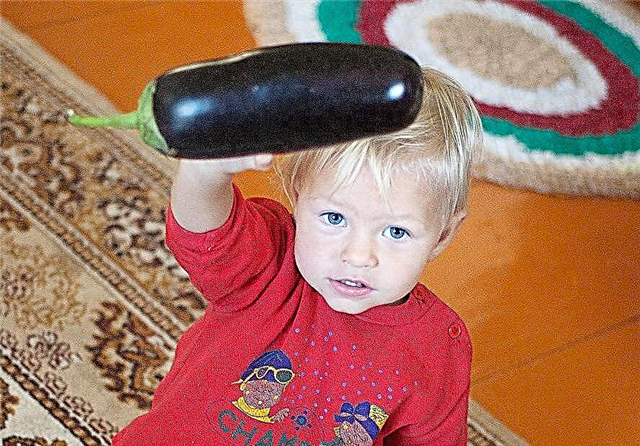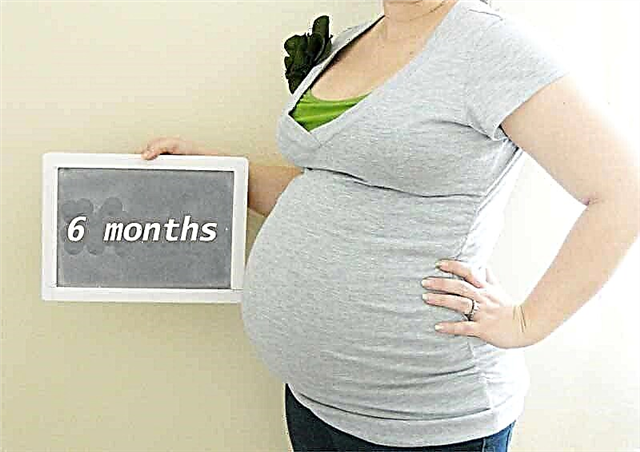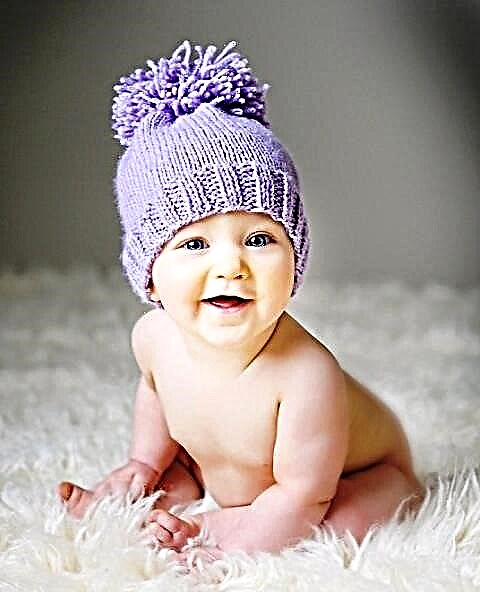Since a baby's foot grows very quickly, babies often have to buy shoes. It's no secret that shopping for the right product is time-consuming and can be very tiring for a small child. For this reason, many parents prefer to take measurements from their children, in this case, measure the size of the child's feet by age and, leaving the kids at home with their grandparents, go shopping. How to find out the size of the foot of a small child by months, how to determine the size of children's shoes by the age of the child? This article will answer these and other relevant questions.

To make children's shoes comfortable, you need to correctly determine the size of the foot and select the appropriate product
Obviously, a newly born infant does not need shoes. As an analogue at this age, socks and warm booties are used. After some time, the baby grows up and begins to walk on its own. From this moment on, it becomes necessary to wear shoes.
How to find out your child's foot size
Finding out the approximate foot size of a small child at home is not difficult at all. There are several ways to do this:
- Measure your foot with a centimeter;
- Use the classic formula;
- Apply foot size chart by child's age.
On a note. If a table is used to calculate the size of a child's foot, then it is important to remember that each child develops individually. Therefore, the size of the leg in each individual case may slightly differ from the generally established standards, which are indicated in the dimensional grid. In order for the new shoes to be comfortable and fully fit in size, it is necessary to take into account not only the length of the foot, but also the age and height of the baby.
Child's foot length at different ages
If you need to determine the size of the foot of an infant who still cannot stand firmly on its legs, then the following must be done:
- Take the baby's foot carefully.
- Straighten it.
- Make sure that the baby does not tighten his fingers, otherwise the result will be incorrect.
- Take a rigid ruler and measure the distance from the tip of the thumb to the heel (outermost point).
- Perform similar actions with the second leg of the one-year-old crumbs.
- When measuring, take into account the highest values.
- Compare the result with tabular data.
Council. To find out the length of a child's foot under one year old, you can use a string: it is applied to the leg in the same way as described above, then measured with a ruler and the result is recorded.
There is a classic formula for determining the length of the foot, as well as a method of measuring by fullness (instep). The first option involves the addition of the following values:
- Foot length;
- Room for leg growth;
- Space for the foot to move during movement.
The second option (for completeness) involves measuring the foot along the widest parts of the toe area. This parameter is indicated by five Latin letters: the first two characterize a thin leg, the second two - average fullness or slightly above average, the last one - a full leg with a wide and high foot. To establish the exact value, a half sign can be added to each letter. The subsequent parameter differs from the previous one by 7 mm, the halfness is 3.5 mm.
On a note. The parameter for measuring legs by fullness on children's shoes is rarely indicated. Basically, for kids, universal shoes are produced without taking into account the rise. Such products have fasteners, laces, Velcro or other means of fixing. At the same time, some models of shoes for the summer season provide for the adjustment of the fullness by means of fasteners.
How to find out children's foot size
The easiest and most common way to determine the length of a child's foot is with a tape measure. To do this, you need to do the following:
- Prepare a sheet of paper, pencil and ruler.
- Ask your baby to stand on a blank sheet of paper.
- The foot should be flat on the plane. It is important that the child does not pinch his fingers.
- The foot is outlined with a pencil. Another option is to put a leg moistened with water on paper.
- Measure the resulting silhouette or print with a centimeter.
- Check the figure obtained with the metric grid data and determine the size.
Important! Similar actions should be performed with the second foot. The fact is that the size of one track is almost always larger than the second. Choose the larger of the two values obtained.
During the measurement, you need to make sure that the baby's legs are level and the baby is confidently and completely resting on the feet. At the end of the procedure, it is necessary to add 1/2 cm to the result (if you plan to buy summer shoes) or 1.5 cm (for winter shoes). Thanks to this, the boots will not be too big and at the same time will sit well on the feet, dressed in warm socks. In addition, there will be free space inside for air, which will allow the shoe to stay warm for as long as possible.

Outline the foot to determine the size
To compare the length of the foot with the size of the shoe in the store, you can cut a stencil and apply it to the sole of the product like an insole.
On a note. It is better to take measurements in the evening, because during the day the foot is subjected to physical stress, which is why it somewhat increases in size by night. In addition, blood flow improves in the evening, which also affects the length of the foot.
The length of the foot of a month-old baby is determined every 3 months, in children aged 6-10 years, the size of the foot is set every 5 months.
This method has several advantages:
- allows you to get the most accurate values;
- the process is easy to carry out;
- indicators do not depend on gender, specific age and height of the baby.
Important! The resulting figures cannot be rounded. You need to take into account every millimeter, then it will be almost impossible to make a mistake with the choice of suitable shoes.
How quickly the leg grows
Children's feet grow every day, but these changes become noticeable only at a certain time. At the time of birth, the length of the newborn's foot is about 7.5 centimeters. Subsequently, the size of the foot increases very quickly. In the second year of life, the legs grow by 2-3 centimeters, the same amount of feet is added in the third year. The growth process stops by the age of 15, by which time the foot size is 23-26 centimeters. In girls, growth is completed earlier than in boys - at the age of 11-14, while in the latter, this period can last up to 18 years.
As the foot grows, its shape and structure also change. For each age period, certain types of shoes are selected, which take into account the peculiarities of the child's development.
Table by age in centimeters
For the baby's foot to develop normally, the baby must wear shoes that fit the foot. It is important that children's shoes are not too large or too small. Otherwise, deformation of the foot may occur. A special table will help to establish the length of the child's foot in relation to age.

Corresponding table of sizes of children's shoes
How to buy shoes correctly
A child tends to grow out of clothes and shoes very quickly. You should not save on shoes for a child, that is, buy products for several years at once. It is better to purchase shoes of a suitable size with a small margin. Otherwise, in the first season it will be large, and by the next, most likely, it will be already cramped.
For babies aged from one to three years, shoes are chosen taking into account the following nuances:
- A child's leg at this stage of development grows by 2-3 cm per year;
- Measurements are carried out once a month;
- Shoes during this period are worn for only one season, so it makes no sense to purchase products back to back. However, the margin should not exceed one to one and a half cm, since at this age the baby learns to walk and moves a lot, and the foot must be clearly fixed, otherwise the child will often fall.
By age, shoes can only be selected with standard indicators of height and weight:
- For children ages 6-9, size 17 is suitable;
- For 9-12 years old - 18;
- For 12-18 years old - 19.
Products for babies from 3 to 6 years old are chosen in accordance with the following rules:
- The foot size increases by 2 sizes per year.
- The foot is measured once every 2-3 months.
- The stock of shoes should be 0.5-1 cm. If shoes of size 25 for a child have become tight, then the recommended size for a new pair of products is 26-27. A small free space in the shoes will allow children's feet to develop normally without disturbing their shape. Size 28 will not work in this case, since this season the shoes will be frankly large for the baby, and next year a new pair will be needed - already size 29.
- Boots with instep supports at this stage of development should be bought only on the recommendation of a doctor.
If the child is from 6 to 10 years old, the choice of shoes occurs with the following features:
- The size of the foot increases by 1-3 cm per year.
- Determination of the size of the foot is carried out every 3-4 months.
- At the age of 6, the child's cartilaginous tissue is already hardening, the feet acquire a clear head start and rise.
When buying children's shoes on the Internet, you need to pay attention to the following details:
- The size of the left and right legs may differ (the maximum difference is 6 mm), therefore, after measurement, both values are recorded, and the choice is made in favor of the one that is larger;
- During movement, the foot moves slightly forward. Therefore, when wearing boots that are too tight, there will be no free space for the toes. As a result, the child will be cramped in such shoes, and walking will be difficult. Children's shoe size table takes into account the allowance;
- If the winter boots turned out to be too spacious, a dense woolen insole will help to correct the situation, which will reduce the shoes by half the size;
- Do not rely on the shoes to be worn out, as the child's leg is constantly and rapidly growing.
If you neglect the above rules, the baby may have problems of this nature:
- When buying shoes for growth:
- The leg is not fixed when moving, which interferes with normal walking, as a result, the risk of injury increases;
- Calluses appear;
- The legs get tired quickly, as during the movement the muscles tense up to keep the shoes on the foot;
- The gait becomes shuffling.
- When wearing shoes that are too tight:
- The shape of the fingers changes, as they constantly bend. Walking like this has a negative effect on posture;
- Due to the fact that blood vessels are compressed, the legs freeze faster.
Dimensional chart in different countries
When measuring a child's foot with a ruler, the result is the metric size (mm). Previously, there was the only system by which the size of children's shoes was indicated in cm, equal to the length of the foot. The difference between the dimensions was 5 mm. Now another system has spread - shihmass. In this case, the size is indicated in the so-called stitches, each of which is 0.66 cm.
In Europe, foot size is determined using a scale mass system. In Russia, the metric one is most often used, but recently the first option is also gaining popularity.
Important! Manufacturers in different countries are guided by their dimensional grids (the length of the foot can be determined in cm, inches, stitches, etc.), therefore, when choosing a product, you need to pay attention to the manufacturer and take into account the dimensions according to the corresponding tables.

Size chart in different countries
Signs of choosing the right shoe:
- Shoes are easy to put on and take off;
- The shoes fit well, the leg is clearly fixed in it and at the same time not pinched;
- The child's toes should reach the toe of the shoe, but not rest against it;
- The little finger of an adult can fit between the back of the shoe and the heel of a child.
How to identify tight shoes
Shoes should always have a small margin. You can determine it by the insole of the product that the baby is currently wearing. You need to add a few centimeters to the length of the insole, then you get the optimal size for the child.
To understand that the stock is chosen incorrectly, you need to pay attention to the following indicators:
- Shoes for the child end-to-end;
- The instep support is out of place (should be located under the arch of the foot);
- Compare the model of the child's foot with the sole of the product. To do this, place the stencil inside the shoe and determine the stock by the heel.

You can define tight shoes like this
How to tell if a shoe is small
Signs of tight shoes are:
- The kid tightens his fingers when walking;
- Calluses, abrasions, redness appeared on the feet.
Determining which size of children's shoes is suitable for a child is not difficult. To do this, it is enough to use the standards for measuring the foot and compare the indicators with the data in the table.



